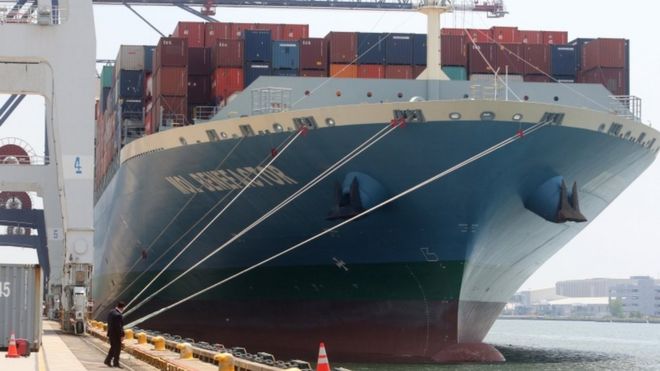An
increasing amount of spot fixtures have been negotiated using so called
‘disadvantaged’ tankers thus far this year (see Tanker Operator Aug/Sept
issue).
In addition, several older tankers have also been fixed for operational
floating storage in the timecharter market this year, due to a lack of
onshore storage facilities.
However, over the last few weeks, a notable shift toward inventory
drawdowns from refiners has been observed, reducing the need for this
type of floating storage, McQuilling Services reported in an industry
note.
As one cause for floating storage is abating, a new one may be
emerging: the recent strengthening of the US dollar amid ‘Brexit’ has
pressured spot crude prices more than forward levels, revealing
short-term arbitrage opportunities conducive to floating storage.
According to McQuilling’s daily analysis of remotely-sensed vessel
position data, a marked build-up of offshore floating storage was seen
in April and May. For example, the average number of anchored VLCCs with
cargo on board reached 51 per day in May, compared to only 21 in the
beginning of the year.
The Middle East and Southeast Asia remained the top anchorage zones,
accounting for 88% of the VLCC floating storage fleet throughout 2016 to
date.
In the Middle East, the number of Iranian VLCCs storing oil remained
steady at around 18 tankers during the year, and for the time being,
they have not significantly impacted on tanker freight rates, since they
are not actively participating in the spot market.
Not surprisingly, we’ve witnessed a very active short-term timecharter
market for VLCCs this year, McQuilling said. Thus far in 2016, around 13
tankers have been fixed for less than three months, compared to only
two in the first half of last year.
As the majority of these VLCCs have been deployed or geared for
deployment in the Arabian Gulf and Singapore regions, their use for
storage purposes is probable.
Similar to the larger tankers, the number of Suezmaxes involved in
floating storage also experienced an increase from the beginning of
April. The most significant rise was in Southeast Asia, where the number
of floating tankers climbed to six by the end of April.
In addition, McQuilling recorded five Suezmaxes anchored with cargo on
board off West Africa and the Mediterranean during the same period.
However, the situation has changed notably since the start of June, as
the total number of floating storage tankers dropped around 32% within
30 days. By the end of June, the consultancy counted 37 VLCCs and seven
Suezmaxes operating as storage facilities.
This decline could be partly due to the crude price increases since the
third week of May when Brent rose to over $50 per barrel. Charterers
are likely to prioritise offloading crude from floating storage or
drawdown land-based inventories to mitigate against rising crude prices.
As a result, there was a slowdown in cargo demand and continuous oversupply of VLCC tonnage throughout June.
During this period, the AG/Far East and AG/Southeast Asia spot fixture
activity saw a significant decline from 83 in May to 69 in June. The
average freight rates for VLCC AG/Far East also dropped nearly WS8
points month-on-month.
Timecharter rates followed the spot market, with VLCCs falling to their lowest level since March, 2015.
By the end of June, one year VLCC timecharter rates had dropped to
$38,000 per day, a 32.7% decline since January 2016, while recently, the
1999-built ‘Plata Glory’ was fixed for 30 days at $22,000 per day, with
an option to extend the period twice at $26,000 per day and $29,000 per
day, respectively.
Taking into consideration the falling timecharter rates and the short
term pressure on spot crude prices, McQuilling believed that this recent
fixture may be a prelude to more deals. Supporting this view is the
widening short-term contango.
According to JBC energy, the one month spread for Brent crude reached $0.56 per barrel on 5th July, more than double the figure seen at the beginning of June. The two month spread also widened to $1.08 per barrel.
Quantifying the incentive to currently employ floating storage, the
‘Plata Glory’s’ charterer is probably earning a net income of nearly
$9,300 per day for 30 days if the cargo owner brought M1 Brent and sold
M2 Brent futures on 5th July, or $6,150 per day for 60 days if sold M3 Brent futures.
Given that a VLCC can load around two million barrels of crude oil and
consume an average of $2,500 worth of bunkers each day, the breakeven
price to timecharter a VLCC will be around $34,800 per day for 30 days
and $33,500/day for 60 days of current contango levels.
Assuming that tax and other expenses represent an additional 10% of the
overall costs, the breakeven price was adjusted to around $31,300 per
day for 30 days and $30,150 per day for 60 days.
In July month-to-date, the VLCC weighted TCE average stands at only
$23,400 per day, a 60% decline compared to the same period last year.
This figure is also much lower than the current breakeven price to
conduct offshore floating storage, thereby solidifying expectations for
an increase in short-term timecharters.
As a number of VLCCs (likely ‘disadvantaged’) may be removed from the
available tonnage list, McQuilling believed that the VLCC spot market
may have bottomed out and could benefit from the possible offshore
floating storage prospect.
If indeed charterers act upon this opportunity, we are likely to see
steady or slightly increasing VLCC spot rates in July. However, with a
steady flow of newbuildings entering the trading fleet and limited
exits, this support may only keep rates from sliding further, the
consultancy concluded.



















